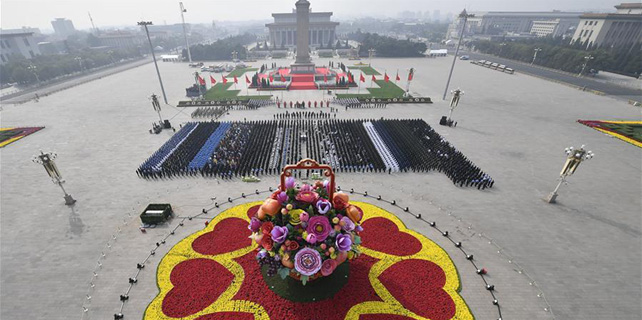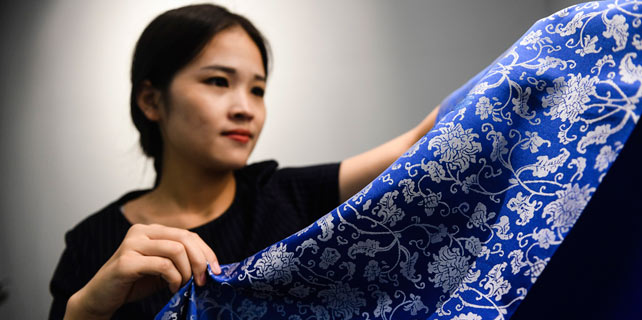Mobile payments the way to go in Chinese cities
I was taken to dinner on Sunday, China's National Day, in Shanghai's old Zhabei neighborhood, which I hadn't visited for some 20 years. It used to be an area of state-owned machinery and boiler factories, once a powerhouse of Shanghai's heavy industry.
Now it looks like a newer version of Friendship Heights in Washington, except the only recognizable American brands there are Dior and Starbucks, the rest Chinese.
Returning to Shanghai every year, with the previous visit in May, it was not the first time my friends teased me with the words "country bumpkin," in a display of Shanghainese arrogance toward outsiders, just like many New Yorkers might.
I was born in the city, but now indeed looked like a xiangxiaren, Shanghainese for country bumpkin.
One simple fact that I deserve that title is that I am not using mobile payments. Instead, I still prefer swiping cards or just paying with cash, which is what I have been doing back in Washington.
Cashiers at Shanghai stores, coffee shops or restaurants used to ask customers if they would be paying with cash or a credit card. Now it's "WeChat, credit card or cash?"
WeChat and Alipay are two primary means of mobile payment. Most young people going to shop and dine no longer carry a wallet, but their smartphones. It was not just the young people; I saw plenty of people in their 60s doing that, too.
The dinner on Sunday was indeed eye-opening. Right after we sat down in the Cantonese dim-sum restaurant called Tai Tsui, the waitress approached and told us to order by scanning the bar code printed on the corner of the table.
Thank god, they still keep the old menu. So while my friend was ordering on her smartphone, I told her what I wanted after browsing the menu. The most 21st century order I have done was ordering on an iPad.
It would be nice if the waitress came with several options because some senior citizens (no offense to them) coming here may not even use smartphones.
Just a minute after the order was made, the waitress brought a print copy of our order, and quickly, the dishes were served, one after the other.
When you're finished, you don't have to ask the server to bring the bill. You scan the payment bar code on the table corner and use mobile payment.
I saw expats in Shanghai and Beijing using mobile payment at 7-Eleven and various places. In a sense, I look like a laowai (foreigner) in my own country.
Mobile payment in China is such a sweeping phenomenon in the past two years that people from New York Times columnist Thomas Friedman to Singapore Prime Minister Lee Hsien Loong have marveled at it.
Some say that China is leading the world into a cashless society, although I am not quite sure how trendy mobile payment is in less developed areas of the country.
For long, Chinese tourists often have been the target of pickpockets and robbers in Europe because they know Chinese like to pay with cash rather than credit cards.
When I was back in Shanghai in May, news arrived that a busload of luggage belonging to a Shanghai tour group, including passports, was stolen in Italy.
If more countries use mobile payment, Chinese tourists may not have to worry about that anymore. They need only carry their smartphones.
Pickpockets doesn't seem to be such a problem in Washington or most US cities, but using mobile payment like people in China do would still be very, very cool.
Contact the writer at chenweihua@chinadailyusa.com
















